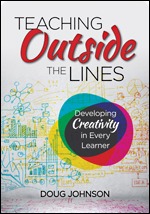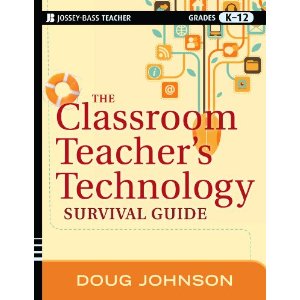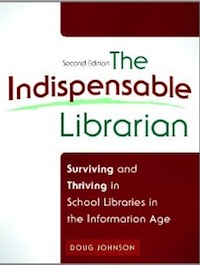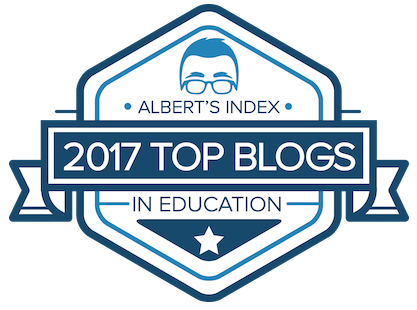CODE77 Rubrics for Administrators 2010 Part 1 of 10
 Saturday, January 2, 2010 at 08:41AM
Saturday, January 2, 2010 at 08:41AM I warned you these were coming.
My former superintendent, Eric Bartleson and I put the first version of these rubrics together back in 1999 (two years before the TSSA Standards first appeared) and I revised them in 2002. Since the NETS-A have recently been "refreshed" and I am scheduled to give a little talk about tech skills for adminstrators, I suspect these need to be spruced up a little as well.
-29 F (-34C) this morning here on beautiful Jefferson Lake, so it's not like I'm going outside anyway. Over the coming days, I'll post all 10 of these with modification.
It is not fair to ask of others what you are unwilling to do yourself. Eleanor Roosevelt
Self-evaluation Rubrics for Basic Administrative Technology Use (2002) 2010
I. Personal Productivity (TSSA Standards III.B, III.D) (NETS-A 2009 3c, 4e)
Level 1: I do not use a computer nor other related information technologies, nor do I expect my office staff to use such technologies. I am not aware of ways that technology can improve my productivity or the productivity of my office staff.
Level 1: I rarely use a computer or other information technology, assigning technology-enabled professional record-keeping and communication to my office staff. I am not aware of or have interest in learning about using a computer, smartphone or other digital communication and information access device.
Level 2: I use a computer to keep a calendar to which my secretary has access; to track addresses and phone numbers of professional contacts; and to compose professional correspondence. I use technology to do routine tasks more effectively and efficiently, which gives me more time for work with staff and on long-term goals and major projects. I can access my calendar and other information remotely using a portable communication device and web-access.
Level 3 I not only use technology to increase my productivity, but encourage my office staff to do so as well. All correspondence from my office school looks professional. All building/district leaders staff use a shared calendar system for easy scheduling of meetings and shared document creation applications for collaborative work. Our school has nearly a paperless work flow, providing both economic and ecological benefits.
Why administrators need to use technology to increase their personal productivity skills:
It seems a contradiction. While the amount of information that all of us deal with in our jobs seems to grow each day, the number of positions that have as their main responsibility to deal with information has dramatically decreased. The number of secretaries, who in the past have answered phones, sent letters, typed reports, kept our schedules, and filed and retrieved information, dropped by over 1,200,000 between 1990 and 1999 according to USA Today (August 8, 2000). That’s a whopping 30% decrease. Guess who is doing the work they used to do? Administrators aided by information technologies.
Just as electronic switching and the expectation that users can use a directory replaced telephone operators, information technologies and the expectation that administrators know how to use them are replacing or changing secretaries’ traditional duties.
Efficient administrators directly handle more communication through voice and email; compose, file and retrieve letters and reports using a word processor; track budgets through spreadsheets and online accounting systems; and access specific school data using a student information system.
Many administrators now assume responsibility for managing their own calendars, address books, and to-do-lists. Programs such as Microsoft Office’s Outlook and Google Apps for Education integrate these time-management tools with an email program. Electronic organizers have four main functions:
1) An electronic calendar. An electronic calendar can schedule single appointments and day-long events. It can easily help the user schedule repeating appointments (the faculty meeting each Wednesday afternoon of the school year). It can give a visual or auditory alert prior to the scheduled meeting.
One handy function of a shared calendaring system is that meetings can be scheduled easily. An open block of time for all attendees can be located quickly using such a calendar instead of the seemingly endless rounds of phone calls.
2) An address book. Like a paper address book, the electronic version keeps names, addresses, phone numbers, birthdays, email address and other bits of helpful information about folks. The electronic version, however, is easily updated and can be used in conjunction with an email program to automate the addressing of messages.
3) A to-do list that helps prioritize tasks. Most of us make and follow lists of things we need to get done. The electronic to-do list also helps us prioritize those task, stores them for later reference after they’ve been completed, and allows us to add information such as due dates.
4) A means of making this information available when away from one’s desktop computer. Organization and time management programs contain information that is needed when one is away from the computer. Most organizational tools help remedy this problem by:
- making the information easily formatted for printing on sheets that fit in common paper organizers such as DayTimers
- allowing the information to be easily synchronized with one’s portable digital assistant (PDA) or smartphone. Software is available that allows information from a student information systems to be downloaded into a PDA. One can check a student’s schedule right in the hallway instead of needing to return to the office.
- storing the organized data on a web accessible server that can be accessed through a computer connected to the Internet
Online collaborative tools that can be used to create documents, presentations, spreadsheets and forms are becoming increasingly critical for many educational leaders whose style encourages joint decision-making and staff input. Wikis and Google Apps for Education (Google Docs) are among the most widely used tools in K-12 at this writing.
The minutia of our jobs often seem to pin us down, like Gulliver trapped by the Lilliputians, and we make small progress toward major accomplishments. Using task organizers such as calendars and prioritized lists can help us schedule the important, long-term tasks.
And allow our secretaries and administrative assistants to do more important tasks as well.









Reader Comments (2)
I'm curious about the tone of Level 1 - I wonder if an administrator might struggle placing themselves there because to do so would mean .
What are your thoughts on: I prefer to use pencil and paper approaches for record-keeping in my office and personal face to face interactions when I need to communicate with my office staff. I use a phone to make phone calls, my computer to write memos and find that my current system works well for me.
Hi Jennifer,
I like your wording and you are right about the tone now that I re-read it.
Thanks for the suggestion (which I will use!)
All the best,
Doug